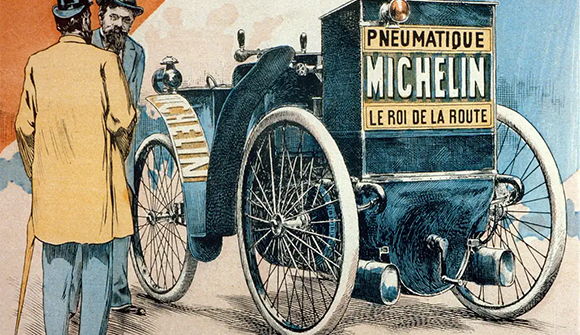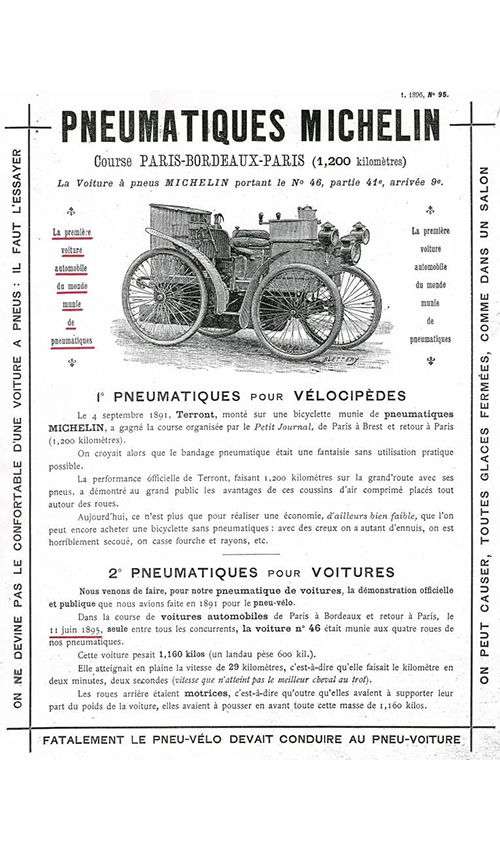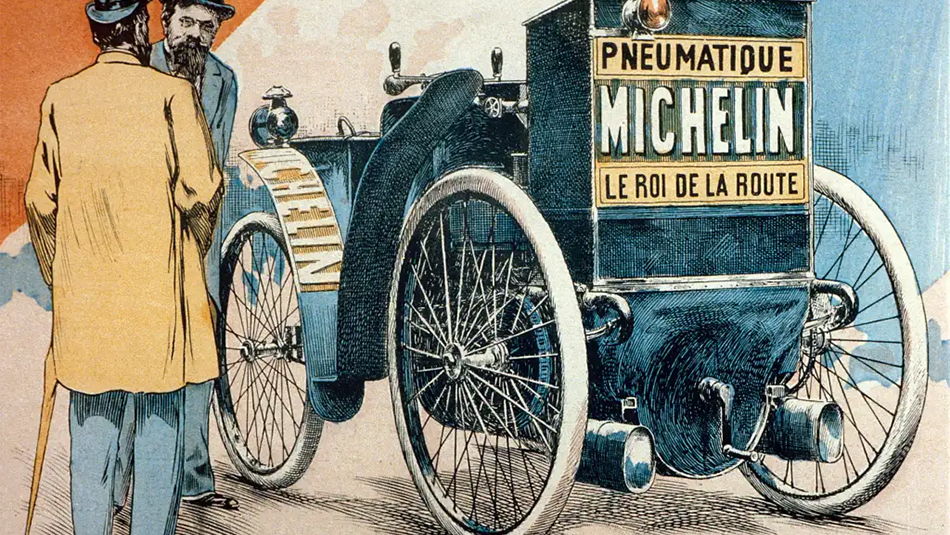
Zoom on Lightning
Zoom on Lightning
It all started when the “little queen” the nick name given to the Bicycle in France gained popularity at the end of the 19th century in this new means of transport and its sporting practice. With the aim of taking part in the “Paris-Brest” and return cycling race of 1891, Édouard Michelin asked his in-house engineer, Mr. Laroche, to design a tire fixing device that could be “removed in a quarter of an hour by a fool “. Developed just in time to be able to compete, the device is installed on the cycle of Mr. Terront who wins the 1200 km race, hands down, with nearly 8 hours ahead of his pursuer.
As early as 1894, Michelin launched into the manufacture of tires for another mode of transport that was beginning to take off, the automobile. The Michelin brothers tested these new kinds of tires on Edouard Michelin’s horse-drawn carriage. Even if the problems of punctures are still a problem, they do not prevent the development of the first automobile tires. This same year will take place the first automobile “competition”, the Paris-Rouen, horseless carriage competition…
To prepare for the “Paris-Bordeaux-Paris” race of June 1895, the first real timed car race, the Clermont-Ferrand factories had three cars available that can be used to showcase the tire.
All three have a nickname: the Swallow, the Spider and the Lightning.
The Hirondelle is a Prussian car from the Benz brand which, like the other two vehicles, will allow “life-size” tests to be carried out in the vicinity of Clermont, with a view to the race.
Édouard Michelin remembers an anecdote which helps us to put ourselves in context: “all the little young people in the office, some of whom are today proxies for the house, had gone to the coast of Sayat to see ride the car. It was 4 a.m. and these enthusiasts of the new sport had been waiting for a good hour, when they saw an old herdsman coming down with a herd of cows. Most innocently in the world, they ask him if a horseless carriage has not crossed him… This question, which would not surprise anyone today, has the gift of plunging the brave man into a deep anger.
“Should boys like you make fun of a man of my age! Horseless carriages! …
And he raises his stick to correct the rascals, when, at the same moment, emerging from a cloud of smoke, although it was running on oil, the Benz car appears!
… The herdsman has not yet come back.”
Nevertheless, it is impossible for the Hirondelle to connect Clermont to Paris for the start. An engine failure occurs in the vicinity of Orléans… After expertise, it is the cylinder, which split, letting water pass into the combustion chamber.
The car will not participate in the race.
The Spider is an original creation by the Manufacture Michelin. Built on the basis of a 4-horsepower boat engine, and equipped with an interrupted shaft transmission without differential, it turned out to be poorly designed and the engineers were forced, for lack of time, to install the engine at the door. to false. As a result, the vehicle was likely to be very impractical to drive. During the tests, the “pilot” had two accidents, coming a little too close to the trees. The second stronger than the first knocked out the Michelin car.
The Éclair is a Peugeot Type 5 equipped with a 2 ½ HP engine. This is replaced by a 4 HP Daimler boat engine. Bigger than the original one, the engine must also be placed in cantilever, unbalancing the vehicle. On feeling, the steering is erratic and the vehicle moves askew, zigzag, like lightning, from which it takes its name. This is not the only modification that the Type 5 undergoes, because it is fitted out to be able to deal with breakdowns and tire changes, which are inevitable during the race. The tool box containing the essential spare parts brings the vehicle to nearly 1 ton 160 kg.
For the Éclair begins the testing period. During the months preceding the race, the vehicle had its first minor accident near Clermont Ferrand. Three weeks before the start, during a night test, a brake problem, which occurred after a wheel change, caused him to leave the road. Drivers ejected on the lawn, are quits for a big scare. The telegraph pole, which stopped the course of the vehicle, ends up on the ground. Under the effect of the impact, the vehicle caught fire and partially burned. The vehicle is completely rebuilt but it bears the structural marks of the fire. The drivers who should have piloted the Éclair refuse to do so. Never mind, it’s the Michelin brothers who take their place on the starting line!
The Éclair is the 46th and last vehicle on the list of participants. In order to promote the event, all participating vehicles are exhibited at the Champ de Mars, Rapp gallery.
The start of the race was given on the morning of June 11, 1895. The first stage linked the Arc de Triomphe to the Place d’Armes in Versailles. This is more like a parade than a race, however, it is far from being a walk despite an average speed of 12 km/h. Already L’Éclair is showing its surly spirit and will not be present for the departure from Versailles at noon. But the Peugeot has not said its last word, the Éclair passes the Tours control on June 12 at 9:38 p.m. then the Bordeaux control on June 13 at 12:45 p.m. with a delay of more than 24 hours on the first and arrives in Paris on Saturday 15 at 7.50 p.m. in 10th and last position but downgraded since the race was to last a maximum of 100 hours. The performance is still worth it because the Michelin brothers show their invention and gain a lot of interest. Hats off gentlemen!
Peugeot has been offering wheels equipped with “spare” tires on its vehicles since 1896.
Find out more about the result of the “Paris-Bordeaux-Paris” race –> Emile Levassor’s car on Panhard arrives first in this event. However, this one only had two places. However, the regulations specified that only cars with more than two seats could claim the reward. This is how the first prize is awarded to the four-seater Peugeot of the duo Koechlin – Rubichon (driver and mechanic respectively).





